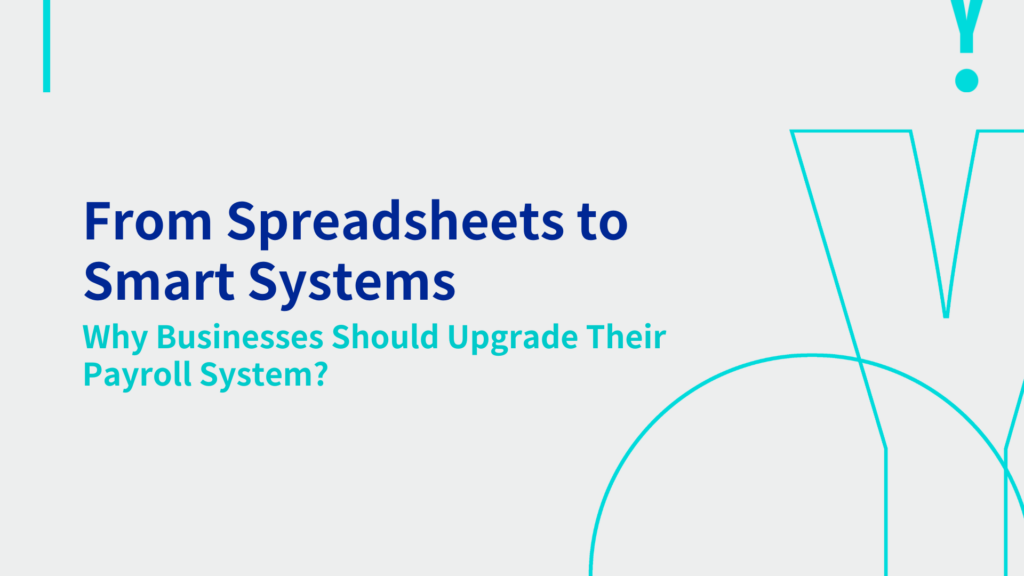
Many businesses still rely on spreadsheets for payroll, believing them to be efficient and familiar. However, as organizations expand, spreadsheets reveal costly limitations.
Manual data entry for managing an employee payroll system creates recurring errors, leading to salary disputes, compliance failures, and employee dissatisfaction. Finance teams spend countless hours correcting formulas and reconciling numbers instead of focusing on growth strategies.
Additionally, security risks increase because spreadsheets lack advanced protection against unauthorized access. Frequent regulatory changes also complicate payroll calculations, leaving businesses vulnerable to penalties.
For growing companies, this outdated system becomes a serious liability. Therefore, businesses must ask—how long can they sustain these inefficiencies?
Upgrading to modern payroll management systems ensures accuracy, security, compliance, and long-term financial sustainability in today’s increasingly competitive market environment.
- Spreadsheets Are Holding Back – The Need for A Proper Payroll System
- The Financial Costs of Spreadsheet Dependence
- Why Smart Payroll Systems Make Business Sense?
- Technical Edge: Key Features of Smart Payroll Systems
- The ROI of Payroll Automation
- Overcoming Common Concerns about Payroll Transition
- Step-by-Step Roadmap to Smarter Payroll
- Case Example: Transformation through Payroll Automation
- Future of Payroll: Intelligent Automation and AI
- Why Businesses Must Act Now?
- End Note
Spreadsheets Are Holding Back – The Need for A Proper Payroll System
At first, spreadsheets may seem flexible, low-cost, and sufficient. Yet, hidden problems accumulate quickly.
- Risk of Costly Human Errors
Even skilled professionals occasionally miscalculate formulas or misplace data. One error may affect hundreds of employees simultaneously.
- Excessive Time Consumption
Finance teams spend hours validating numbers, reviewing tax codes, and fixing small mistakes. Hence, this drains valuable resources.
- Data Security Gaps
Spreadsheets lack encryption and role-based access. Sensitive payroll data is vulnerable to leaks, breaches, plus external misuse.
- Compliance Complexity
Payroll compliance requires constant alignment with changing laws. Spreadsheets cannot automatically adapt to regulatory updates, thus creating compliance exposure.
The Financial Costs of Spreadsheet Dependence
Continuing with manual payroll eventually becomes more expensive than upgrading. You need the best system for HR Hong Kong.
Direct Costs
- Errors require reprocessing, delaying payments.
- Non-compliance attracts fines and interest charges.
- Manual hours increase payroll expenses significantly.
Indirect Costs
- Employee trust erodes due to repeated errors.
- HR resources shift from strategic functions to administrative corrections.
- Businesses risk losing credibility with auditors and regulators.
So, when calculated over time, these inefficiencies drain profits. The cost of inaction outweighs the investment in smart payroll processing systems.
Why Smart Payroll Systems Make Business Sense?
Modern payroll software transforms payroll from a painful task into a seamless, value-driven process.
Higher Accuracy And Transparency
Automated calculations remove formula errors. Employees trust timely and correct salary distribution, strengthening workplace morale and retention.
Time Savings for Strategic Work
Finance teams spend less time on manual checks. They focus on forecasting, financial planning, and cost optimization instead.
Strengthened Data Security
Smart systems protect sensitive data through encryption, authentication layers, and controlled access. Security audits improve compliance and accountability.
Scalable for Business Growth
Unlike spreadsheets, payroll software scales easily. Whether managing 50 or 5,000 employees, processes remain efficient and accurate.
Technical Edge: Key Features of Smart Payroll Systems
Modern payroll systems are built with technology that simplifies complex financial processes.
Cloud-Based Platforms
Teams access payroll securely from anywhere. Cloud storage eliminates risks of corrupted files and local device failures.
Automated Tax & Compliance Updates
Systems auto-update tax codes and labor regulations. Businesses avoid compliance risks without manual intervention from payroll staff.
Integration with HR and Finance
Payroll links directly with HR databases and accounting software. Hence, this integration reduces redundancy and creates real-time visibility.
Role-Based Access
Controlled access ensures sensitive data remains confidential. Audit trails create accountability and simplify regulatory reviews.
Date Analytics & Reporting
Real-time dashboards provide insights into labor costs, salary distribution, and tax liabilities. Leaders gain powerful decision-making tools.
The ROI of Payroll Automation
Businesses often hesitate due to upfront investment fears. However, the returns are measurable and sustainable.
Cost Reductions
- Automation reduces rework and dispute resolution costs.
- Subscription-based systems eliminate large infrastructure spending.
- Real-time reporting saves expensive audit preparation hours.
Efficiency Gains
- Payroll processing time drops by up to 70%.
- Finance teams focus on strategic growth initiatives.
- Employee queries have reduced due to transparent self-service features.
Long-Term Impact
Payroll automation delivers consistent accuracy, reducing compliance risks. Businesses strengthen trust with employees, regulators, and auditors alike.
Overcoming Common Concerns about Payroll Transition
Concerns prevent businesses from upgrading. However, each worry has a practical solution.
Concern: Implementation Costs
Modern payroll or HR Hong Kong solutions follow subscription models, making them budget-friendly. Savings from reduced errors quickly recover the initial investment.
Concern: Data Migration
Providers offer secure transfer tools and dedicated support teams. Careful planning ensures no data is lost during migration.
Concern: Employee Resistance
User-friendly systems with intuitive dashboards make adoption easier. Employees appreciate faster access to pay information and greater transparency.
Step-by-Step Roadmap to Smarter Payroll
Transitioning requires planning. A structured approach ensures smooth payroll implementation.
- Step 1: Evaluate Current Challenges
Audit existing payroll practices. Highlight frequent mistakes, compliance gaps, and hidden costs.
- Step 2: Define Requirements
List critical needs such as integration, scalability, or multi-location payroll management. Align them with business growth objectives.
- Step 3: Select The Right Vendor
Choose providers with proven security, compliance expertise, and industry experience. Review service level agreements carefully.
- Step 4: Ensure Data Security during Migration
Transfer records using encryption. Validate accuracy before shutting down spreadsheet processes permanently.
- Step 5: Train Staff & Employees
Provide hands-on training sessions. Encourage feedback to improve adoption and system usage.
- Step 6: Monitor Performance Continuously
Review reports regularly. Therefore, optimize configurations as business regulations and workforce demands evolve.
So, if you want to upgrade to a smarter and more efficient payroll system, contact YOOV.
Case Example: Transformation through Payroll Automation
A mid-sized technology company used spreadsheets to process 400 employee salaries. In general, payroll took four days monthly, with frequent disputes. Compliance issues created repeated penalties. After shifting to cloud payroll, processing was reduced to one day.
Errors decreased by 80%. Employee satisfaction increased significantly due to timely payments. Additionally, audit preparation required fewer resources.
Hence, this transformation highlights the real, measurable benefits of adopting smart payroll management systems.
Future of Payroll: Intelligent Automation and AI
Payroll software systems are advancing further with artificial intelligence and predictive technologies.
- Predictive Forecasting: AI tools predict future labor costs. Businesses gain financial clarity and optimize workforce budgets proactively.
- Chatbots for Employee Queries: Employees receive immediate answers to payroll-related questions, reducing administrative workload for HR and finance teams.
- Intelligent Compliance Tracking: AI-powered systems flag potential compliance risks before they become penalties. Businesses stay prepared and protected at all times.
These innovations demonstrate that payroll is evolving into a strategic financial function, not just an administrative necessity.
Why Businesses Must Act Now?
Sticking with spreadsheets increases operational risks and hidden costs. The longer businesses delay, the harder transitions become.
Payroll automation secures compliance, improves employee trust, and saves money. Additionally, it strengthens financial visibility for future growth. With technology available at scalable costs, the right time to upgrade is now.
End Note
Payroll should not drain resources, create disputes, or risk compliance. Instead, the payroll system should be seamless, secure, and strategically valuable. Spreadsheets belong to the past. Today’s businesses require smarter systems that ensure accuracy, compliance, and efficiency.
Transitioning may require planning, but the long-term gains outweigh short-term discomforts. Therefore, by adopting payroll automation, businesses transform payroll from an administrative burden into a competitive advantage.
Connect with YOOV

WhatsApp:Click Here
Email:hello@yoov.com
Website:https://www.yoov.com/